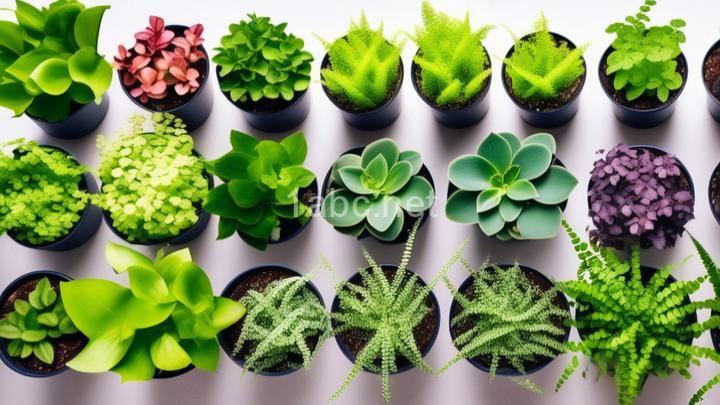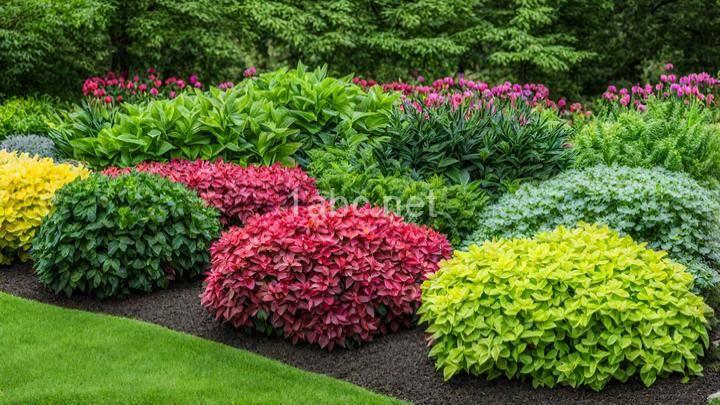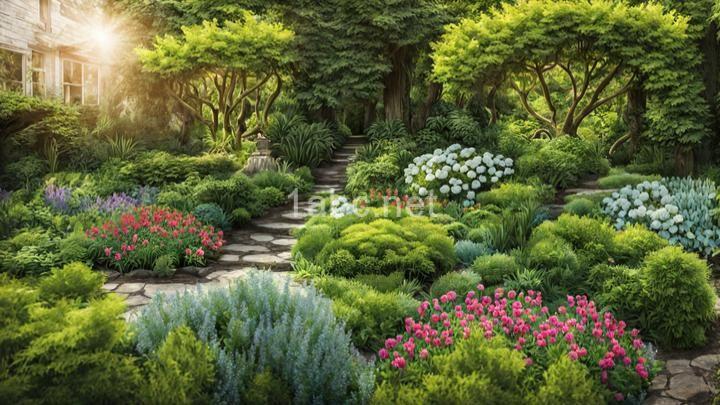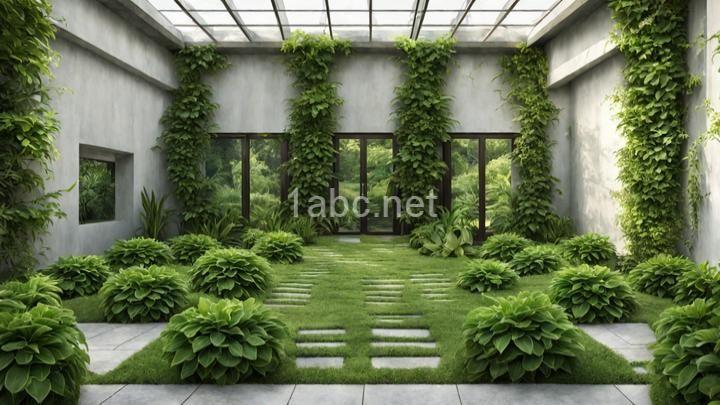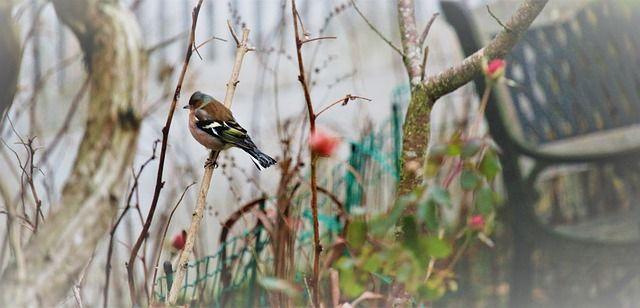Creating a Beautiful Shade Garden: Tips and Tricks
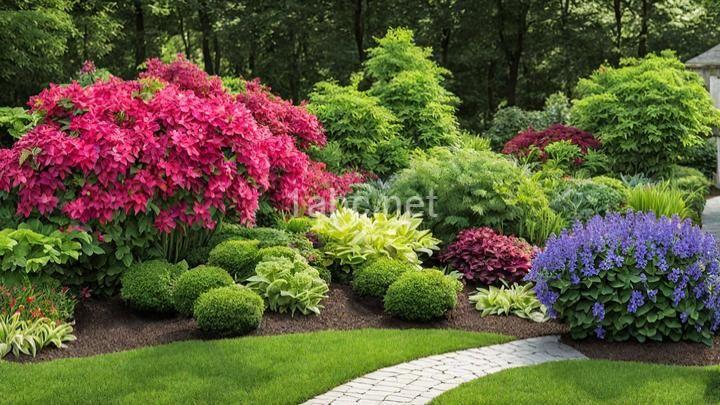
Introduction:
Welcome to our blog post all about creating a beautiful shade garden! If you have a shady spot in your yard and are looking to transform it into a stunning outdoor oasis, you've come to the right place. Shade gardens offer a unique opportunity to showcase a diverse range of plants and create a cool and tranquil retreat. In this article, we'll guide you through the process of creating your own shade garden, from understanding shade levels to selecting the perfect plants and designing a layout that suits your style. So grab a cup of coffee, find a cozy spot, and let's get started!
Section 1: Understanding Shade Gardens
Before we dive into the details of creating a shade garden, it's important to have a clear understanding of what exactly a shade garden is. Unlike sunny gardens, shade gardens are characterized by their lack of direct sunlight for most of the day. This can be due to the presence of tall trees, buildings, or other structures that create shade. The level of shade can vary, ranging from light shade, where there is filtered sunlight for a few hours a day, to deep shade, where there is almost no direct sunlight at all.
When it comes to selecting plants for your shade garden, understanding the different levels of shade is crucial. Some plants thrive in dappled sunlight, while others can handle deeper shade. To assess the amount of shade in your garden, spend a day observing how the sunlight moves throughout the space. Take note of areas that receive direct sunlight, as well as those that remain shaded for the majority of the day. This will help you determine the best plants for each area of your shade garden.
Section 2: Selecting Plants for Your Shade Garden
Now that you have a better understanding of the shade levels in your garden, it's time to select the perfect plants to fill it with beauty. Shade-loving plants have adapted to survive and thrive in low-light conditions, and there are plenty of options to choose from. Here are a few popular shade-loving plants to consider:
-
Hostas: These leafy perennials come in a wide range of sizes and colors, making them perfect for adding texture and variety to your shade garden. They are known for their lush foliage and can tolerate a range of shade levels.
-
Ferns: Ferns are a classic choice for shade gardens, thanks to their delicate fronds and ability to thrive in moist, shady conditions. They add a touch of elegance and charm to any garden.
-
Bleeding Hearts: With their heart-shaped flowers dangling from arching stems, bleeding hearts bring a touch of romance to the shade garden. They prefer partial shade and can add a pop of color to darker corners.
-
Coral Bells: These versatile perennials come in a variety of colors and have stunning foliage that ranges from deep burgundy to lime green. They are a great choice for adding visual interest and texture to your shade garden.
When selecting plants for your shade garden, it's important to consider not only their light requirements but also their individual growth habits. Aim for a combination of plants with different heights, textures, and bloom times to create a visually pleasing and dynamic garden. Don't be afraid to experiment and mix and match different varieties to create a unique and beautiful atmosphere.
Section 3: Creating a Layout for Your Shade Garden
Now that you have your shade-loving plants selected, it's time to plan the layout of your shade garden. Start by considering the available space in your garden and how you want to utilize it. Do you want to create a cozy seating area where you can relax and enjoy the tranquility of your shade garden? Or perhaps you'd like to incorporate a winding pathway that leads you through the different sections of your garden. Take some time to envision how you want your shade garden to look and feel.
When designing your shade garden layout, take into account the different light exposures in your garden. Group plants with similar light requirements together, placing those that need more sunlight closer to the edges where they can receive the maximum amount of light. This will ensure that all your plants thrive and look their best. Consider incorporating focal points, such as a birdbath or a decorative statue, to add interest and draw the eye.
Section 4: Essential Care Tips for Shade Gardens
Once your shade garden is planted and the layout is complete, it's important to provide proper care to ensure the health and beauty of your plants. Here are a few essential care tips for maintaining a shade garden:
-
Watering: Shade gardens tend to have moister soil than sunny gardens, so it's important to monitor the moisture levels and water accordingly. Check the soil regularly and water when it feels dry to the touch, making sure not to overwater as this can lead to root rot.
-
Fertilizing: Shade-loving plants can benefit from regular fertilization to ensure they have the nutrients they need to thrive. Use a slow-release, balanced fertilizer in early spring and again in mid-summer to provide a steady source of nutrients throughout the growing season.
-
Mulching: Mulching is especially important in shade gardens as it helps retain moisture, suppress weeds, and regulate soil temperature. Apply a layer of organic mulch, such as shredded bark or compost, around your plants, taking care to leave a small gap around the base of each plant to prevent rot.
-
Pest and Disease Management: Shade-loving plants are not immune to pests and diseases, so it's important to keep an eye out for any signs of trouble. Regularly inspect your plants for pests like slugs, snails, and aphids, and take appropriate measures to control them naturally. If you notice any signs of disease, such as yellowing leaves or fungal growth, promptly remove affected plant parts and consider using organic fungicides if necessary.
Section 5: Enhancing Your Shade Garden with Accents and Décor
To truly elevate the beauty of your shade garden, consider adding accents and décor that complement its natural charm. Here are a few ideas to get you started:
-
Decorative Elements: Incorporate decorative elements like sculptures, birdbaths, or wind chimes to add visual interest and create focal points within your shade garden. Choose items that reflect your personal style and enhance the overall ambiance of the space.
-
Lighting Fixtures: Extend the enjoyment of your shade garden into the evening hours by adding lighting fixtures. Use string lights, lanterns, or even solar-powered spotlights to create a warm and inviting atmosphere.
-
Colorful Accessories: Add pops of color to your shade garden with colorful accessories like vibrant cushions for your seating area, brightly colored pots for your plants, or hanging baskets filled with cascading flowers. These small touches can make a big impact on the overall aesthetic of your garden.
Conclusion:
Congratulations on making it to the end of our guide to creating a beautiful shade garden! We hope you've found the tips and tricks shared in this article helpful and inspiring. Remember, creating a shade garden is all about embracing the unique opportunities that shade provides and selecting the right plants and design elements to make it a visually stunning and peaceful space. So go ahead, start planning your shade garden and get ready to enjoy the beauty and tranquility it brings to your outdoor oasis. Happy gardening!
FREQUENTLY ASKED QUESTIONS
Why should I create a shade garden?
Creating a shade garden can be a great idea for several reasons. First, it allows you to make the most of areas in your yard that receive less sunlight. Instead of struggling to grow plants that require full sun, you can choose shade-tolerant varieties that thrive in shadier conditions.Another benefit of a shade garden is that it can help cool down your outdoor space. By strategically placing trees, shrubs, and other shade-providing plants, you can create a more comfortable and inviting environment, especially during hot summer months.
Shade gardens also offer a unique aesthetic appeal. The lush green foliage and delicate blooms of shade-loving plants can create a serene and tranquil atmosphere. It can be a refreshing change from the typical sun-soaked gardens.
Furthermore, a shade garden can be low-maintenance compared to a full-sun garden. Many shade-loving plants are more tolerant of drought and require less watering. This can save you time and effort in garden maintenance.
Lastly, a shade garden can attract wildlife such as birds and butterflies. Many shade plants provide food and shelter for these creatures, adding another layer of enjoyment and biodiversity to your garden.
So, if you have areas in your yard that receive less sunlight or if you simply want to create a cool and serene space, creating a shade garden can be a wonderful option.
What are some plants that do well in shade gardens?
When it comes to shade gardens, there are several plants that thrive in lower light conditions. Here are a few options to consider:
-
Hostas: These leafy perennials come in a variety of colors and sizes, making them a popular choice for shade gardens. They are low-maintenance and can tolerate a range of soil conditions.
-
Ferns: With their delicate fronds, ferns add a touch of elegance to any shady area. They prefer moist soil and can be planted in both containers and in-ground gardens.
-
Astilbes: These beautiful flowering plants produce feathery plumes in shades of pink, white, and red. They are known for their ability to thrive in partial shade and can bring a pop of color to your shady garden.
-
Bleeding Hearts: With their unique heart-shaped flowers, bleeding hearts are sure to capture attention in a shade garden. They prefer well-drained soil and can tolerate varying degrees of shade.
-
Coral Bells: Also known as Heuchera, coral bells offer a splash of color with their vibrant foliage. They thrive in dappled shade and can be a great addition to borders or containers.
-
Japanese Forest Grass: This ornamental grass is known for its graceful, arching foliage. It thrives in shade and can provide a soft, flowing texture to your garden.
Remember, while these plants do well in shade, it's still important to consider the specific conditions of your garden, such as soil type and moisture levels, to ensure the best success.
How do I know how much shade my garden gets?
To determine how much shade your garden gets, there are a few methods you can try. One simple way is to observe the sunlight patterns throughout the day. Take note of when different areas of your garden are in direct sunlight, partial shade, or full shade. This will give you a general idea of the amount and duration of shade in each area.If you want a more accurate assessment, you can use a shade analysis tool or app. These tools utilize your location and provide detailed information about the shade patterns in your garden. They often use satellite imagery to map out the specific areas of shade at different times of the day.
Another option is to use a shade meter. These devices measure the amount of shade in a particular spot by calculating the percentage of sunlight blocked. Simply place the shade meter in different areas of your garden and record the readings.
Additionally, you can consult a professional gardener or landscape designer who can assess the shade levels in your garden and provide recommendations based on their expertise.
Remember, understanding the shade in your garden is crucial for choosing the right plants that thrive in specific light conditions. By determining the shade levels, you can create a more successful and enjoyable garden.
How do I prepare the soil in a shade garden?
To prepare the soil in a shade garden, there are a few steps you can follow:
-
Clear the area: Remove any weeds, rocks, or debris from the soil to create a clean slate for your shade garden.
-
Test the soil: It's essential to know the pH level and nutrient content of your soil. You can easily get a soil testing kit from a local garden center or send a sample to a laboratory for analysis. This will help you determine if any amendments are needed.
-
Amend the soil: Shade-loving plants often prefer slightly acidic soil. If your soil pH is too high, you can lower it by adding organic matter such as compost, pine needles, or peat moss. These materials can also improve the soil's structure and water retention.
-
Add organic matter: Adding organic matter is crucial for enriching the soil and promoting healthy plant growth. Mix in well-rotted compost, leaf mold, or aged manure into the top few inches of soil. This will enhance its fertility and provide essential nutrients for your shade plants.
-
Mulch the area: Apply a layer of organic mulch, such as shredded bark or wood chips, around your shade plants. Mulch helps retain moisture, suppress weeds, and regulate soil temperature. It also contributes to the overall aesthetics of your shade garden.
-
Water regularly: Shade gardens tend to have less evaporation due to reduced sunlight. However, it's still important to water your plants regularly, especially during dry spells. Ensure that the soil remains consistently moist but not waterlogged.
By following these steps, you'll prepare the soil in your shade garden to create a favorable environment for your plants to thrive. Happy gardening!
